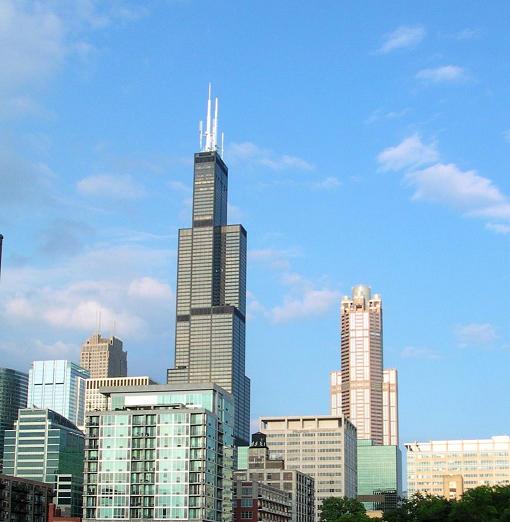I Love Chicago! - Neighborhoods - Greektown Traditional Geocache
I Love Chicago! - Neighborhoods - Greektown
-
Difficulty:
-

-
Terrain:
-

Size:  (small)
(small)
Please note Use of geocaching.com services is subject to the terms and conditions
in our disclaimer.
A pill bottle. Parking might be tough! You do not have to go past the fence.
The Short Story
Greektown is located in the triangle formed by Halsted, Harrison, and Blue Island Streets, which became known as the “Greek Delta.”, within the Near West Side.

Thanks to moodygrrl for the great picture!
The Longer Story :)
Greek immigrants began arriving in Chicago in the 1840s. These were primarily seamen who came from New Orleans by way of the Mississippi and Illinois Rivers and became engaged in commerce on the Great Lakes. Some returned to their homeland with glowing tales of the Midwest and returned with relatives and friends. Such networks would stimulate significant migration, however, only after the Great Fire of 1871. The community of approximately 1,000 in 1882 drew considerably, for example, on the recruitment activities of Christ Chakonas, who became known as the “Columbus of Sparta.” After coming to Chicago in 1873 he saw the moneymaking possibilities it offered and returned repeatedly to his native Sparta to recruit others. Many of these relatives and compatriots procured construction jobs in rebuilding the city. Others became food peddlers or merchants on Lake Street, then the city's business center. When news of their success reached their hometown, a new wave of Greeks, many from neighboring villages in the provinces of Laconia and Arcadia, followed, giving the small community on the Near North Side a distinctly Peloponnesian flavor. Chicago soon became the terminus for Greek immigrants to the United States and housed the largest Greek settlement in the nation until replaced by New York City after World War II.
Greek immigrants settled initially in the central city in order to be near their place of work, especially the wholesale Fulton and South Water Streets markets, and to procure produce for their food peddling businesses. At the turn of twentieth century, Greeks began concentrating on the Near West Side in the shadow of Hull House and amidst other European immigrants, they developed a seemingly self-contained ethnic enclave, with its web of church and school, businesses, shops, doctors, lawyers, fraternal lodges, mutual benefit societies, and hometown associations, along with restaurants and the ubiquitous coffeehouses. The oldest extant Greek American newspaper, the Greek Star, was founded in Chicago in 1904 along with the Greek Press in 1913. By 1930, Chicago had become home to approximately 30,000 first- and second-generation Greek Americans.
After World War II a new wave of immigration to the United States took place, with many Greeks coming to Chicago under the Displaced Persons Act. This immigration surge accelerated with the 1965 repeal of the National Origins Act, which enabled some 260,000 Greeks to enter the United States, many of them settling with relatives in Chicago. By 1990 the U.S. census counted more than 70,000 people in metropolitan Chicago claiming Greek ancestry, approximately one-third in the city and two-thirds in the suburbs. The 2000 census counted 93,140 people of Greek ancestry in the metropolitan region. Community estimates, however, ranged from 90,000 to 125,000.
------------------------
Dedication:
To the caching crew of JustUsTwo and Tishman and Lucy.
There isn't a group that has more fun in northern Illinois.
I just can't wait to hear of their adventures with this series. :)
Have fun you'se guys!
Additional Hints
(Decrypt)
Va gur tnc. Haqre gur fvqrjnyx.